Abstract
1. The effects of repeated excitation on the compound action potential, or M wave, of mammalian muscle fibres have been investigated in the human biceps brachii. 2. During continuous indirect stimulation at 10 and 20 Hz the mean voltage-time area of the M wave doubled within the first minute, while the mean peak-to-peak amplitude increased by approximately half. The enlargement of the M wave was sustained during stimulation at 10 Hz but not at 20 Hz. Stimulation at 3 Hz caused a small increase which was significant for M wave amplitude only. 3. When the 20 Hz stimulation was performed under ischaemic conditions, the M wave first enlarged and then gradually declined. After 20 Hz stimulation was discontinued, the M wave increased in size; in the ischaemic experiments the release of the cuff produced a further, rapid augmentation. In both the ischaemic and non-ischaemic experiments, the amplitudes and areas of the M waves during the recovery period became significantly larger than the resting values (range, 15-60% at the endplate zone). 4. The mean muscle fibre impulse conduction velocity decreased to less than half the resting value during 20 Hz stimulation, with or without ischaemia, and then increased above the resting value during recovery. 5. On the basis of previous experiments in animals, the augmentation of the M wave was attributed to enhanced electrogenic Na(+)-K+ pumping, and the biceps brachii appeared to be an excellent preparation for studying the time course of this enhancement.
Full text
PDF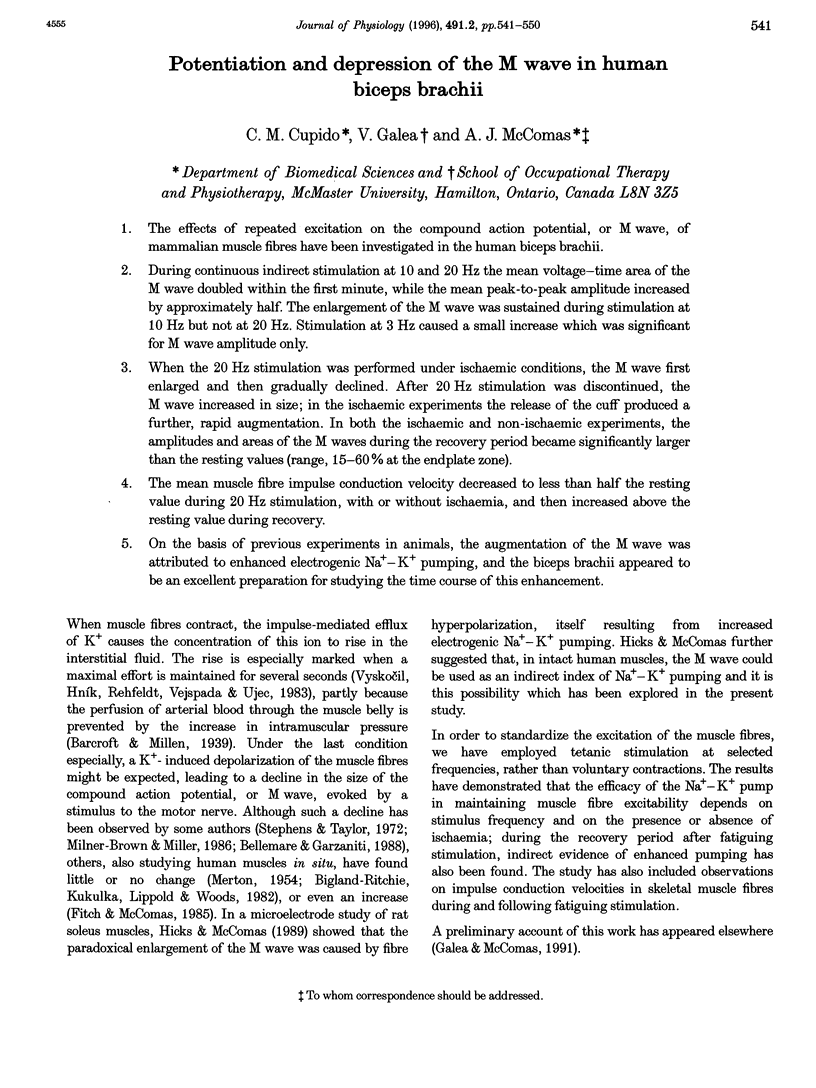
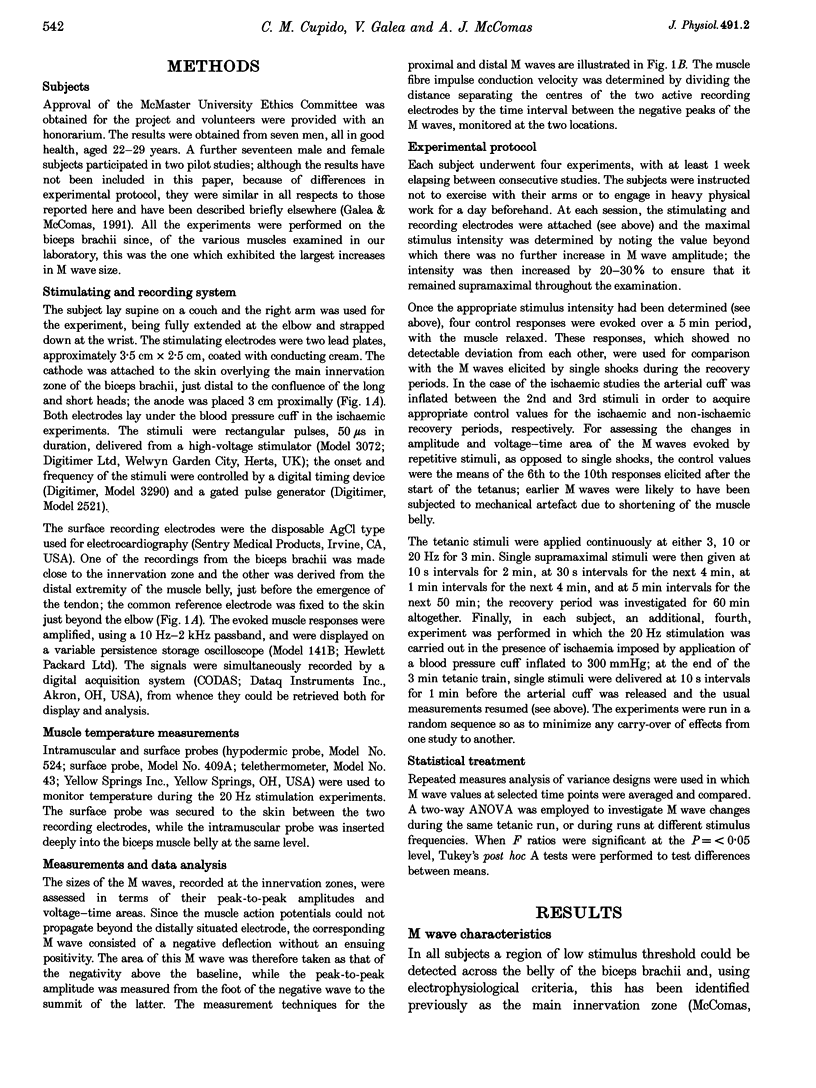
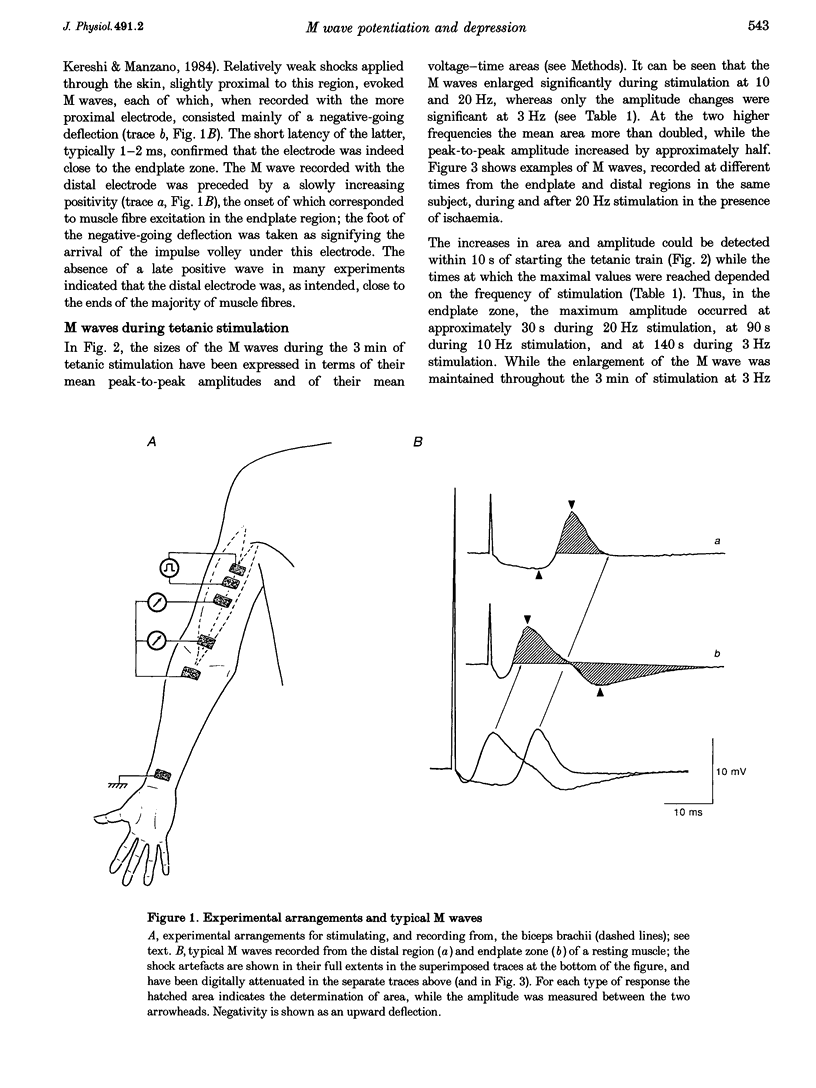
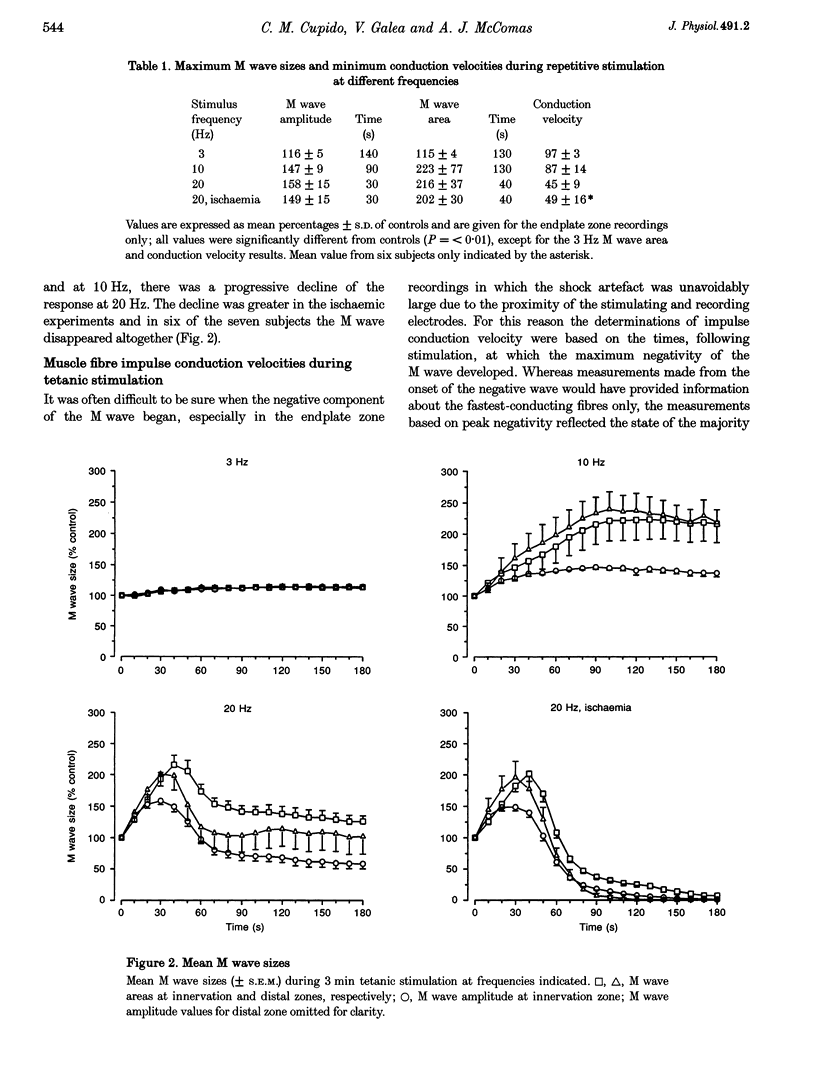
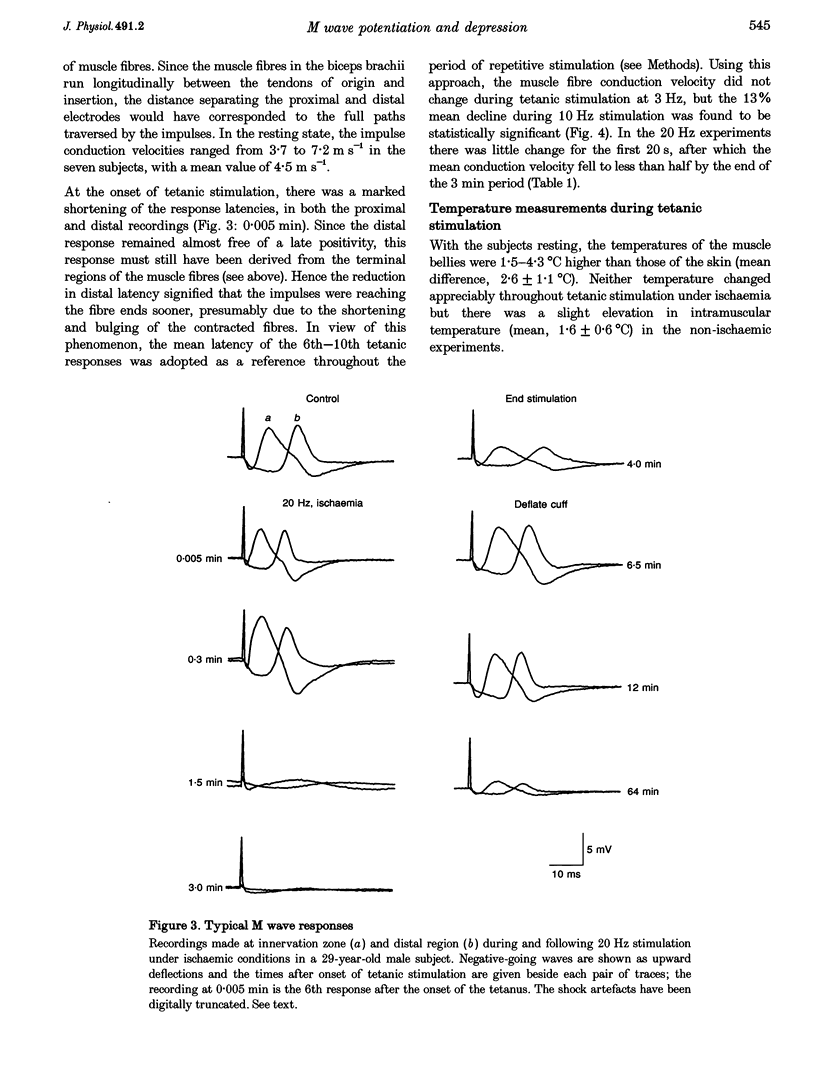
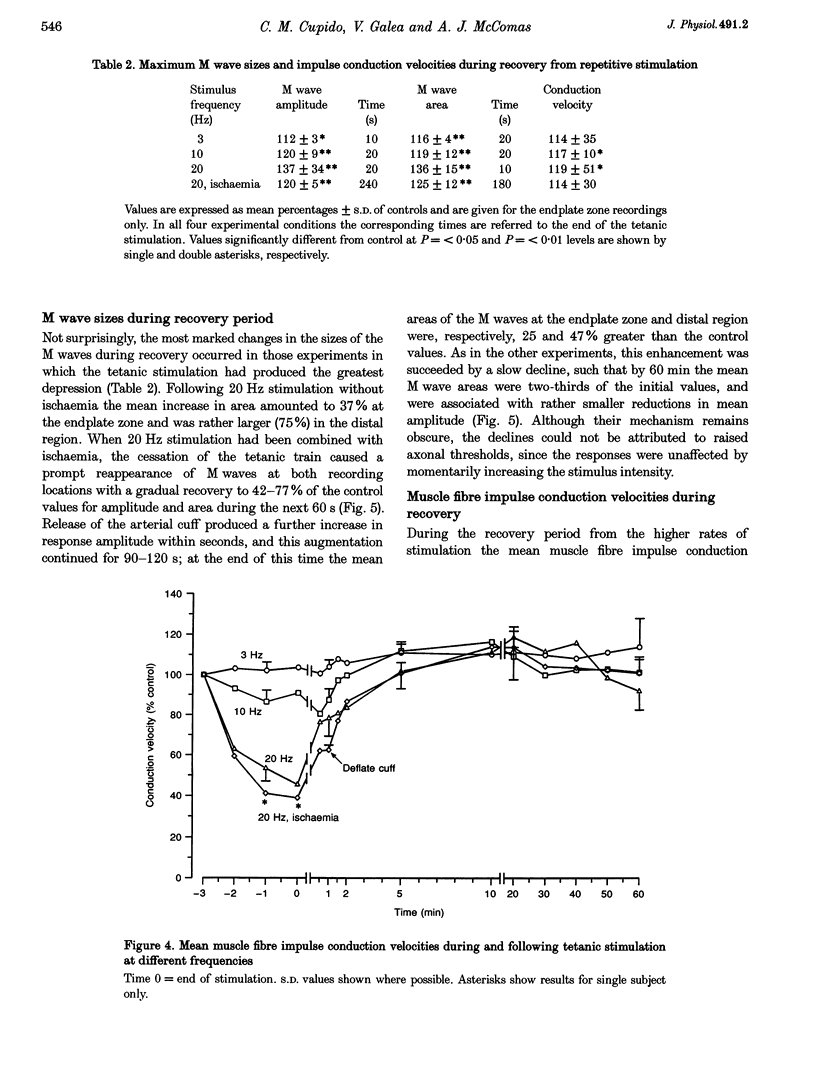
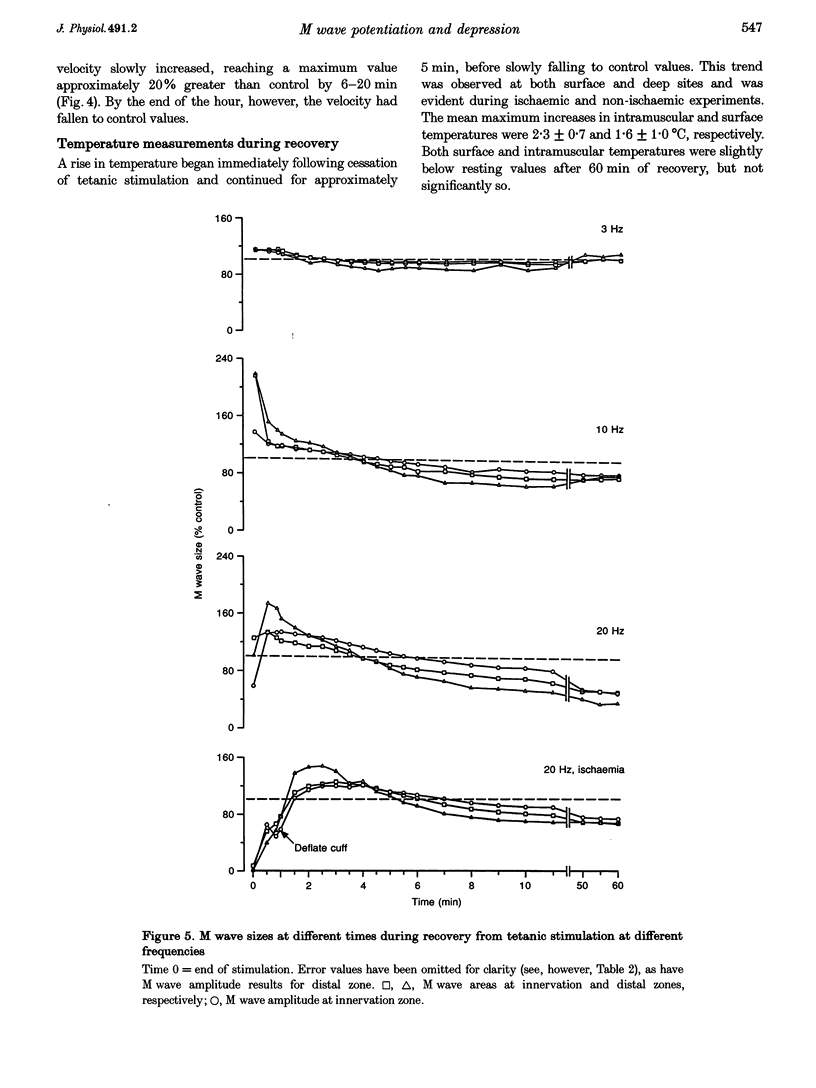
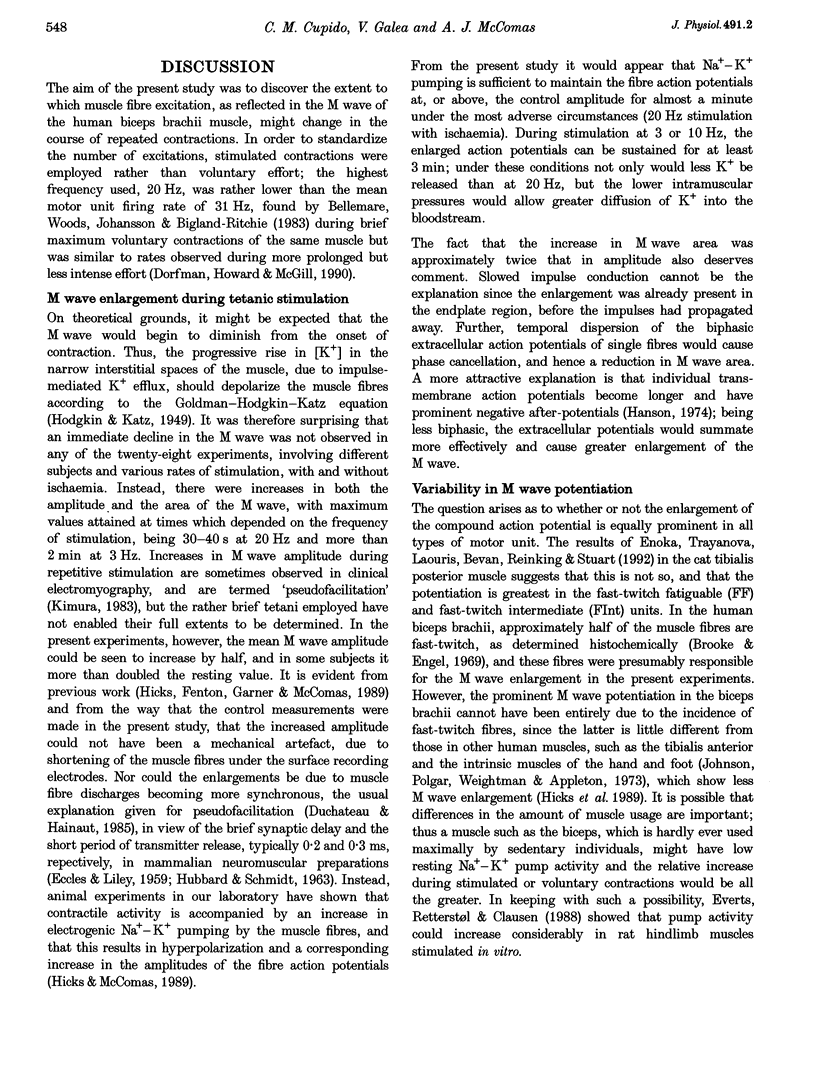
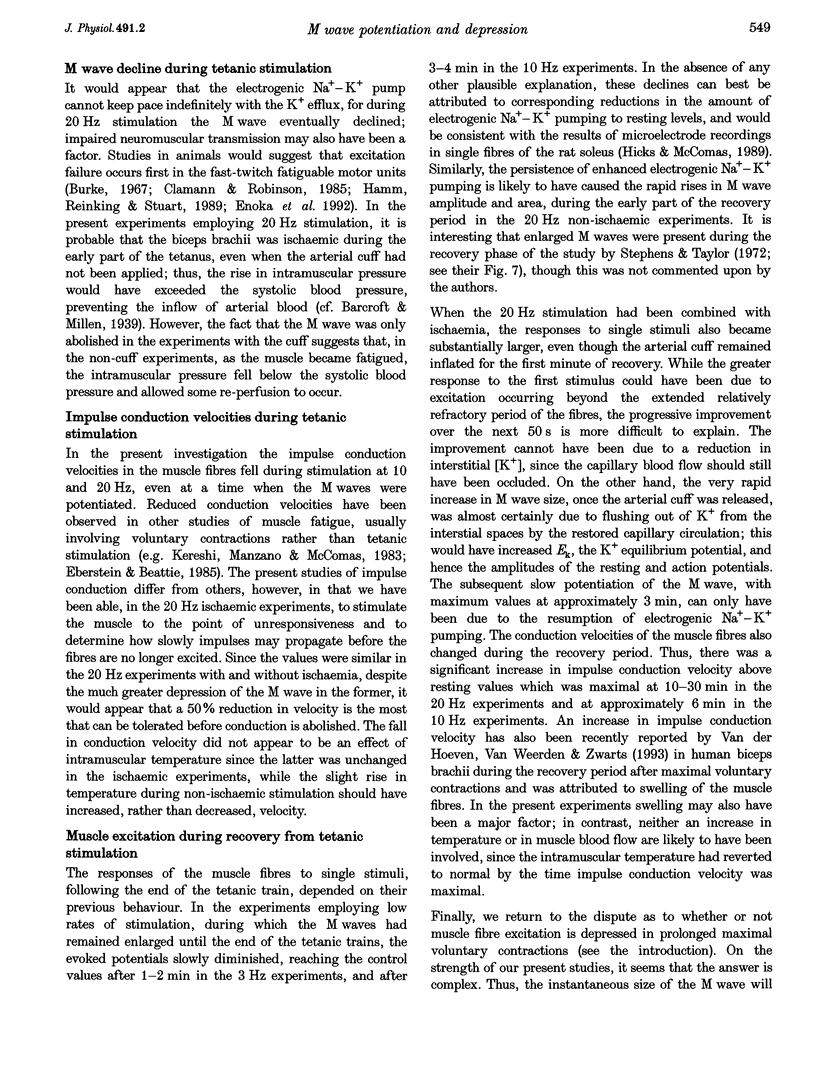
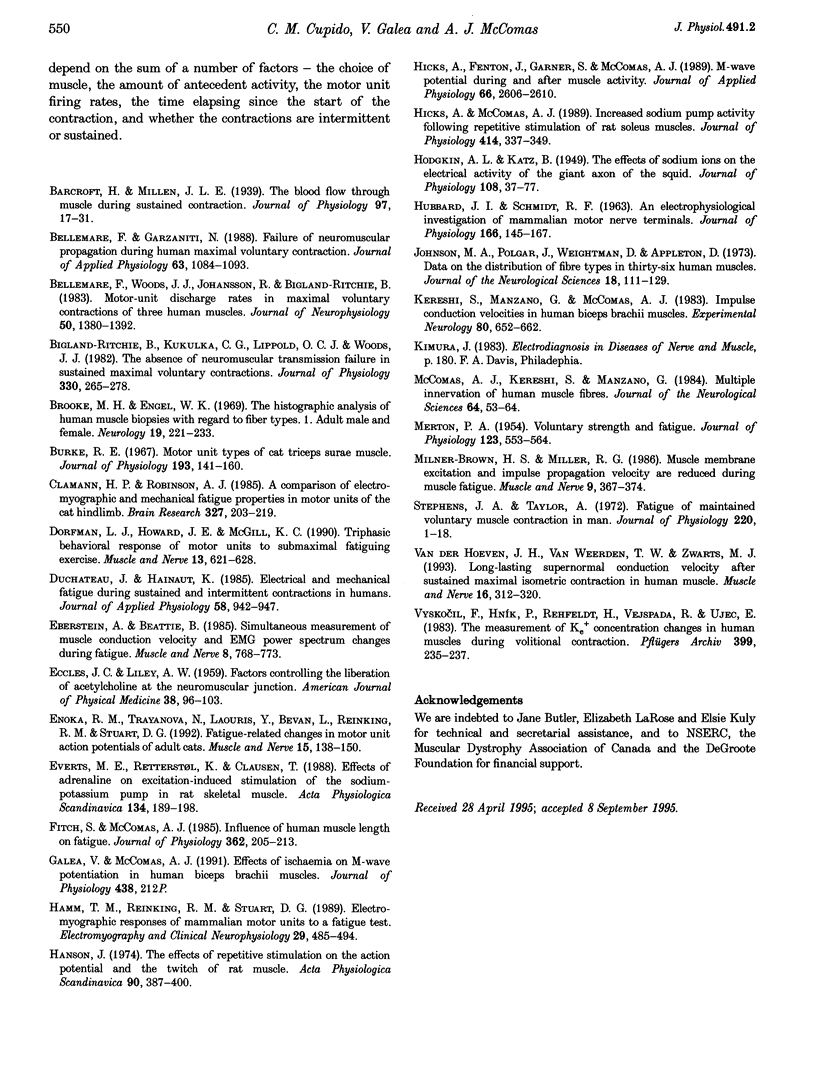
Selected References
These references are in PubMed. This may not be the complete list of references from this article.
- Bellemare F., Woods J. J., Johansson R., Bigland-Ritchie B. Motor-unit discharge rates in maximal voluntary contractions of three human muscles. J Neurophysiol. 1983 Dec;50(6):1380–1392. doi: 10.1152/jn.1983.50.6.1380. [DOI] [PubMed] [Google Scholar]
- Bigland-Ritchie B., Kukulka C. G., Lippold O. C., Woods J. J. The absence of neuromuscular transmission failure in sustained maximal voluntary contractions. J Physiol. 1982 Sep;330:265–278. doi: 10.1113/jphysiol.1982.sp014340. [DOI] [PMC free article] [PubMed] [Google Scholar]
- Burke R. E. Motor unit types of cat triceps surae muscle. J Physiol. 1967 Nov;193(1):141–160. doi: 10.1113/jphysiol.1967.sp008348. [DOI] [PMC free article] [PubMed] [Google Scholar]
- Clamann H. P., Robinson A. J. A comparison of electromyographic and mechanical fatigue properties in motor units of the cat hindlimb. Brain Res. 1985 Feb 18;327(1-2):203–219. doi: 10.1016/0006-8993(85)91514-8. [DOI] [PubMed] [Google Scholar]
- Dorfman L. J., Howard J. E., McGill K. C. Triphasic behavioral response of motor units to submaximal fatiguing exercise. Muscle Nerve. 1990 Jul;13(7):621–628. doi: 10.1002/mus.880130711. [DOI] [PubMed] [Google Scholar]
- Duchateau J., Hainaut K. Electrical and mechanical failures during sustained and intermittent contractions in humans. J Appl Physiol (1985) 1985 Mar;58(3):942–947. doi: 10.1152/jappl.1985.58.3.942. [DOI] [PubMed] [Google Scholar]
- Eberstein A., Beattie B. Simultaneous measurement of muscle conduction velocity and EMG power spectrum changes during fatigue. Muscle Nerve. 1985 Nov-Dec;8(9):768–773. doi: 10.1002/mus.880080905. [DOI] [PubMed] [Google Scholar]
- Everts M. E., Retterstøl K., Clausen T. Effects of adrenaline on excitation-induced stimulation of the sodium-potassium pump in rat skeletal muscle. Acta Physiol Scand. 1988 Oct;134(2):189–198. doi: 10.1111/j.1748-1716.1988.tb08479.x. [DOI] [PubMed] [Google Scholar]
- Fitch S., McComas A. Influence of human muscle length on fatigue. J Physiol. 1985 May;362:205–213. doi: 10.1113/jphysiol.1985.sp015671. [DOI] [PMC free article] [PubMed] [Google Scholar]
- HODGKIN A. L., KATZ B. The effect of sodium ions on the electrical activity of giant axon of the squid. J Physiol. 1949 Mar 1;108(1):37–77. doi: 10.1113/jphysiol.1949.sp004310. [DOI] [PMC free article] [PubMed] [Google Scholar]
- HUBBARD J. I., SCHMIDT R. F. An electrophysiological investigation of mammalian motor nerve terminals. J Physiol. 1963 Apr;166:145–167. doi: 10.1113/jphysiol.1963.sp007096. [DOI] [PMC free article] [PubMed] [Google Scholar]
- Hamm T. M., Reinking R. M., Stuart D. G. Electromyographic responses of mammalian motor units to a fatigue test. Electromyogr Clin Neurophysiol. 1989 Nov-Dec;29(7-8):485–494. [PubMed] [Google Scholar]
- Hanson J. The effects of repetitive stimulation on the action potential and the twitch of rat muscle. Acta Physiol Scand. 1974 Feb;90(2):387–400. doi: 10.1111/j.1748-1716.1974.tb05600.x. [DOI] [PubMed] [Google Scholar]
- Hicks A., Fenton J., Garner S., McComas A. J. M wave potentiation during and after muscle activity. J Appl Physiol (1985) 1989 Jun;66(6):2606–2610. doi: 10.1152/jappl.1989.66.6.2606. [DOI] [PubMed] [Google Scholar]
- Hicks A., McComas A. J. Increased sodium pump activity following repetitive stimulation of rat soleus muscles. J Physiol. 1989 Jul;414:337–349. doi: 10.1113/jphysiol.1989.sp017691. [DOI] [PMC free article] [PubMed] [Google Scholar]
- Kereshi S., Manzano G., McComas A. J. Impulse conduction velocities in human biceps brachii muscles. Exp Neurol. 1983 Jun;80(3):652–662. doi: 10.1016/0014-4886(83)90315-1. [DOI] [PubMed] [Google Scholar]
- MERTON P. A. Voluntary strength and fatigue. J Physiol. 1954 Mar 29;123(3):553–564. doi: 10.1113/jphysiol.1954.sp005070. [DOI] [PMC free article] [PubMed] [Google Scholar]
- Milner-Brown H. S., Miller R. G. Muscle membrane excitation and impulse propagation velocity are reduced during muscle fatigue. Muscle Nerve. 1986 May;9(4):367–374. doi: 10.1002/mus.880090415. [DOI] [PubMed] [Google Scholar]
- Stephens J. A., Taylor A. Fatigue of maintained voluntary muscle contraction in man. J Physiol. 1972 Jan;220(1):1–18. doi: 10.1113/jphysiol.1972.sp009691. [DOI] [PMC free article] [PubMed] [Google Scholar]
- Vyskocil F., Hník P., Rehfeldt H., Vejsada R., Ujec E. The measurement of K+e concentration changes in human muscles during volitional contractions. Pflugers Arch. 1983 Nov;399(3):235–237. doi: 10.1007/BF00656721. [DOI] [PubMed] [Google Scholar]
- van der Hoeven J. H., van Weerden T. W., Zwarts M. J. Long-lasting supernormal conduction velocity after sustained maximal isometric contraction in human muscle. Muscle Nerve. 1993 Mar;16(3):312–320. doi: 10.1002/mus.880160312. [DOI] [PubMed] [Google Scholar]


